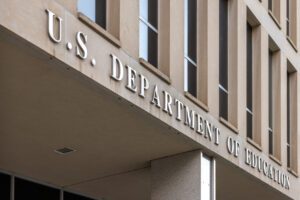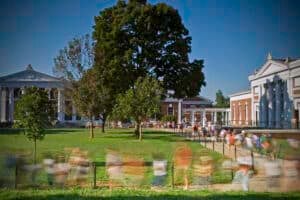Public Service Loan Forgiveness (PSLF) is a federal program that was established in 2007 during the presidency of President George W. Bush. It provides loan forgiveness to non-profit and government employees who work full-time for qualifying employers for at least 10 years and make 120 qualifying monthly payments.
President Trump has been critical of the PSLF loan program and has suggested changing what kinds of employment qualify and what payments count toward the needed 120. Several changes were proposed for the original One Big Beautiful Bill (OBBB), but they didn’t make it into the final bill.
However, the OBBB still contains significant changes that will impact PSLF borrowers. If you plan on applying for loan forgiveness, this is what you need to know.
Public Service Loan Forgiveness and the One Big Beautiful Bill
The original OBBB made several changes to PSLF, such as excluding medical and dental residencies from counting as qualifying employment toward loan forgiveness. Those provisions didn’t make it into the final OBBB, so medical and dental residencies still count as eligible employment for the purposes of loan forgiveness.
The final OBBB did make changes to the available repayment options. Currently, student loan borrowers can take advantage of one of the income-driven repayment (IDR) plans — income-based repayment (IBR), income-contingent repayment (ICR), Pay As You Earn (PAYE) or Saving on a Valuable Education (SAVE) — and make reduced payments while still making progress toward loan forgiveness
However, the OBBB eliminated SAVE, ICR, and PAYE. Right now, borrowers can still enroll in ICR and PAYE, but these plans will be phased out over the next three years. Going forward, the only repayment options will be standard repayment, IBR, and a new Repayment Assistance Plan (RAP).
What the OBBB Means for PSLF Borrowers
The OBBB officially put an end to the SAVE repayment plan. And, the U.S. Department of Education recently announced that interest will begin accruing on SAVE loans starting on August 1, and it encourages borrowers to switch repayment plans.
If you’re working toward PSLF and are currently enrolled in SAVE, you’ll have to switch repayment plans to make progress toward the necessary payment count. Time that you’ve spent in the payment forbearance for SAVE will not count toward the 120 needed payments. However, there are two options:
Enroll in a New IDR Plan
If you’re currently enrolled in SAVE, you can enroll into a different IDR plan, such as IBR. Once you switch, your loan payments will begin, and your loans will no longer be in forbearance. As you make payments under the new repayment plan, you’ll begin making progress toward the necessary payments for loan forgiveness.
PSLF Buy Back
If you’re enrolled in SAVE and your loans were in forbearance, you can “buy back” months of PSLF credit for the time your loans were paused due to court injunctions. If you have 120 months of qualifying payments, you can make payments that cover the past months that didn’t count due to forbearance. To do so, you must submit a buyback request to your loan servicer.
Learn More: Student Loan Refinancing vs. Public Service Loan Forgiveness
What Will Happen to PSLF?
The future of PSLF is murky. On StudentAid.gov, there is an announcement at the top of the PSLF page:
“We are reviewing the recent Executive Order regarding the Public Service Loan Forgiveness (PSLF) Program. There are no changes to PSLF currently, and borrowers do not need to take any action.”
That information is vague, but it indicates that the current administration expects changes to the program in the future. However, nothing is definitive, so borrowers pursuing loan forgiveness shouldn’t make drastic changes to their plans right now.
You can continue to make payments and work toward PSLF through your employment. And, you can use the PSLF Help Tool to certify your employment and your payments to make sure you stay on track.


